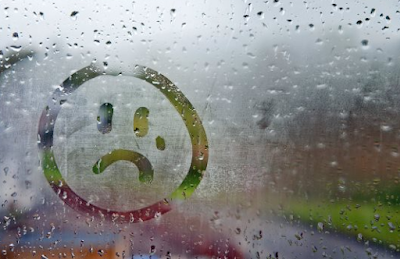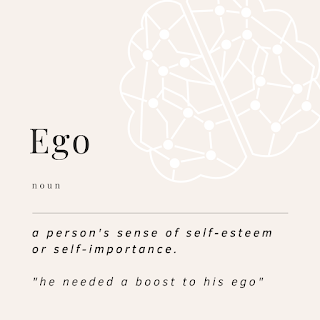BEATING THE WINTER BLUES - S.A.D AND RECOVERY
We will all experience factors in our life that make recovery harder to keep on top of, and oftentimes, we have no control over these things.
I am not alone in finding winter challenging. For some people this seasonal shift can be mild, but for some it is debilitating; having a profound impact on the ability to carry out everyday activities.
Seasonal Affective Disorder
Seasonal Affective Disorder (SAD) is a type of depression that has a seasonal pattern, with episodes of depression tending to occur at the same time of the year. Although we presume this to be during the winter months, SAD can affect people in the summer months, and has a different sub-set of symptoms.
WINTER PATTERN SAD
Low energy levels
Overeating / craving carbohydrates
Hypersomnia
Losing interest in activities you typically enjoy
Difficulty concentrating
Social withdrawal / ‘hibernation’
SUMMER PATTERN SAD
Agitation / restlessness
Poor appetite / weight loss
Insomnia
Anxiety
Episodes of aggressive / violent behaviour
SAD is often minimised as ‘having the winter blues’, but in reality, it can have a serious detrimental impact on one’s life, and ability to function on a day to day basis. As with many depressive disorders, some people may have mild symptoms while others may have severe and debilitating symptoms. According to the Diagnostic and Statistical Manual of Mental Disorders, 5th Edition (DSM-5), SAD is essentially the presentation of the symptoms of Major Depressive Disorder, but with a seasonal pattern, rather than being present all year round.
The precise cause of SAD is unknown, as it is a multifactorial condition, but it is thought that serotonin, a neurotransmitter responsible for feelings of wellbeing, is lower during the winter months, as it relies partly on exposure to sunlight for stimulation. In addition, increased levels of melatonin, a sleep regulating hormone can contribute to oversleeping and low daytime energy.
The link between substance use disorder (SUD) and SAD is also well documented, with the understanding that people who are suffering with depressive symptoms are more likely to self-medicate with substances or engage in serotonin-stimulating behaviours such as shopping or gambling.
Whether or not you have a formal diagnosis of SAD, or you simply feel lower in mood and energy during the winter months, there are a number of interventions that can help it feel less like a never-ending winter.
Treatments for SAD
Light therapy
Artificial lamps are used to mimic the effects of sunlight on the body. This can help the body produce normal levels of serotonin and melatonin, improving mood and sleep. These can be purchased for home use.
Cognitive Behavioural therapy (CBT)
Cognitive-behavioural therapy is a kind of talking therapy where negative thoughts and behavioural patterns are identified, healthy coping mechanisms developed. Cognitive behavioural therapy is an effective treatment for both SAD and SUD, and you have likely been introduced to it in treatment. CBT can be practised daily without seeing a therapist, helping to shift thoughts to a more positive mindset.
Medication
In some cases where SAD is formally diagnosed, Selective serotonin reuptake inhibitors (SSRIs), a type of antidepressant, can be prescribed for SAD. These drugs can increase the amount of available serotonin in the brain and improve mood. If you are concerned about symptoms that are impeding on your day to day function, please see your GP for further advice.
Self-care for SAD
Spending time outside
Going outside in the sunshine and keeping blinds and curtains open helps increase exposure to sunlight in the winter months, thus boosting serotonin levels. We may not have as many sunny days as we would like during the winter months, but taking advantage of brighter days and getting some fresh air is always beneficial.
Eat well
It’s not news that eating a well-balanced diet rich in nutrients can help with general wellbeing and help balance mood. It may be tempting to order pizza for the third time this week but trust me, your energy levels will not thank you for it. You don't have to spend hours slaving away in the kitchen - here are some quick nutritious meals that you can whip up in less than 30 minutes.
Get moving
We all know it. Exercise is one of the best ways to increase serotonin levels, boosting mood and resilience. It doesn’t have to be a marathon, a walk around the block or a short daily yoga practice is enough to make a difference. 10 minutes of basic yoga has become a staple of my morning routine, and if I miss it, I really do notice a difference in my energy levels.
These interventions are not re-inventing the wheel. But they are recommended for a reason, and sometimes the smallest changes can deliver big returns. I have seen huge improvements in my mood and energy levels throughout this winter season by treating my body with the kindness it deserves, and by checking in with what I need on a daily basis.
Sometimes, I genuinely do need a day off and a long nap, and that’s perfectly ok! We should never apologise for taking time out when we need to regroup and replenish. I also find comfort in fitting things that bring me joy into my day, such as listening to a podcast (preferably true crime), soaking in a hot bath or dancing (badly) around the flat to drum and bass.
When it comes to my sobriety, I know that when I don’t want to go to a meeting because it is raining outside, or I don’t feel like reaching out to my friends, this is precisely when I need to do it the most. The tendency to isolate is still my default setting, as well as the thing my addiction thrives on. I know from experience that if I get myself to a meeting or call a friend in recovery, I will be in a better position emotionally to manage the everyday stuff, even if I am only flying at half-mast, so to speak.
Remember that this journey is about demonstrating progress, not perfection. Why not try and make one change this winter and see if you feel the benefit?
Celeste is in recovery from addiction and is passionate about exploring ways we can be accountable for ourselves, while practising radical self-compassion. They have embraced the spiritual aspect of their recovery, and finds peace in simple pleasures.



Comments
Post a Comment